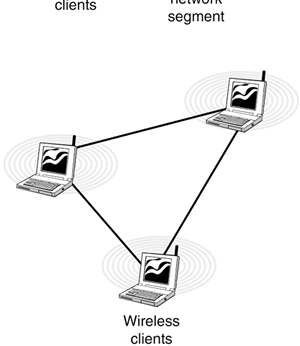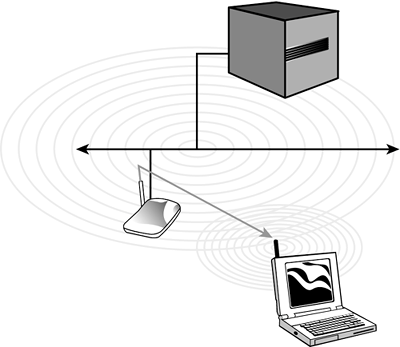Infrastructure Wireless Topology
The infrastructure wireless topology is commonly used to extend a wired LAN to include wireless devices. Wireless devices communicate with the wired LAN through a base station known as an access point (AP) or wireless access point (WAP).
The AP forms a bridge between a wireless and wired LAN, and all transmissions between wireless stations, or between a system and a wired network client, go through the AP.
APs are not mobile and have to stay connected to the wired network; therefore, they become part of the wired network infrastructure thus the name. In infrastructure wireless networks, there might be several access points providing wireless coverage for a large area or only a single access point for a small area such as a single home or small building.
Ad Hoc Wireless Networking
In a wireless ad hoc topology, devices communicate directly between themselves without using an access point. This peer-to-peer network design is commonly used to connect a small number of computers or wireless devices. As an example, an ad hoc wireless network may be set up temporarily between laptops in a boardroom or to connect to systems in a home instead of a wired solution. The ad-hoc wireless design provides a quick method to share files and resources between a small number of systems. Figure 7 compares the ad hoc and infrastructure wireless network designs.
Figure 7 Comparing wireless topologies.
